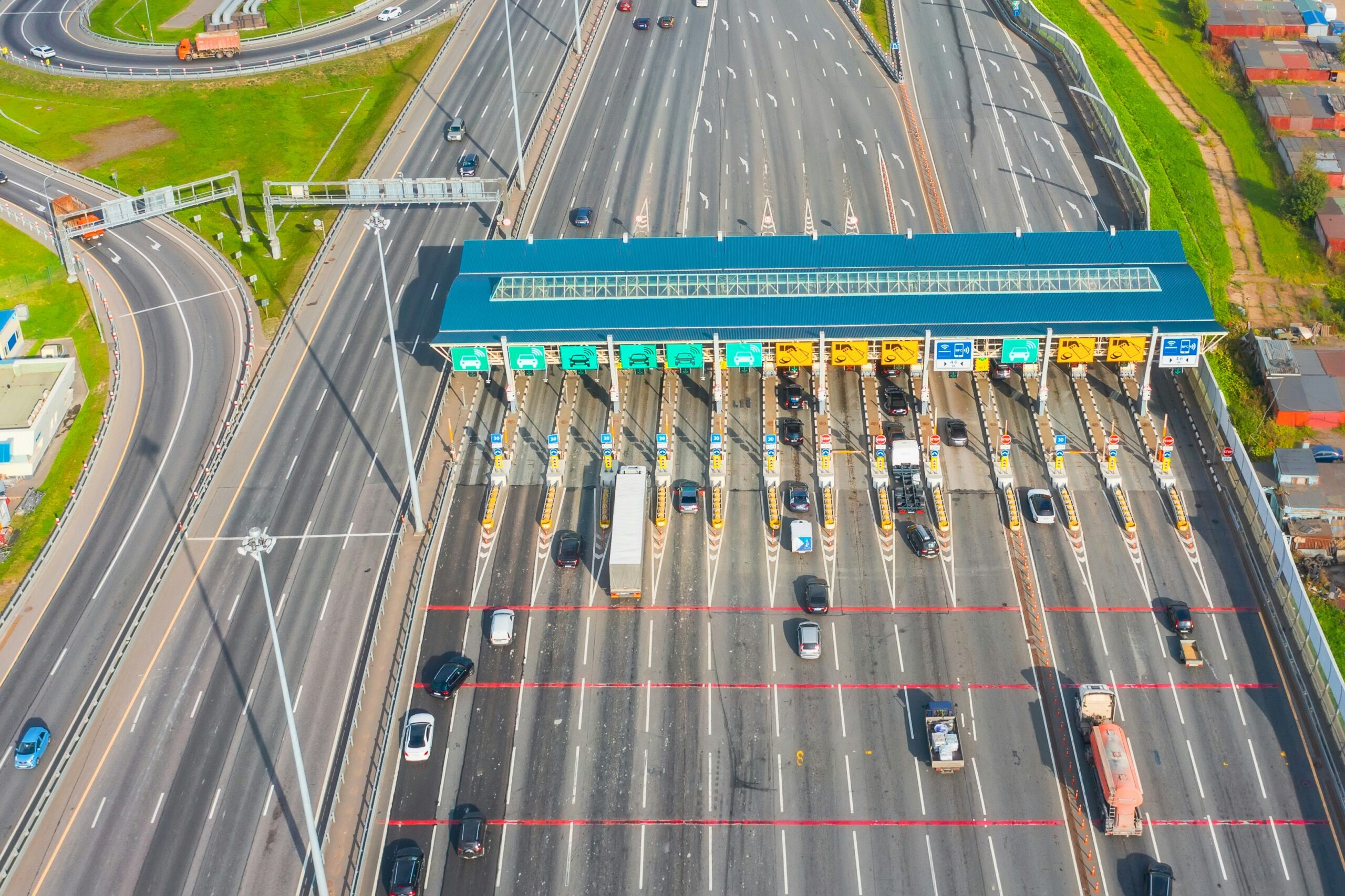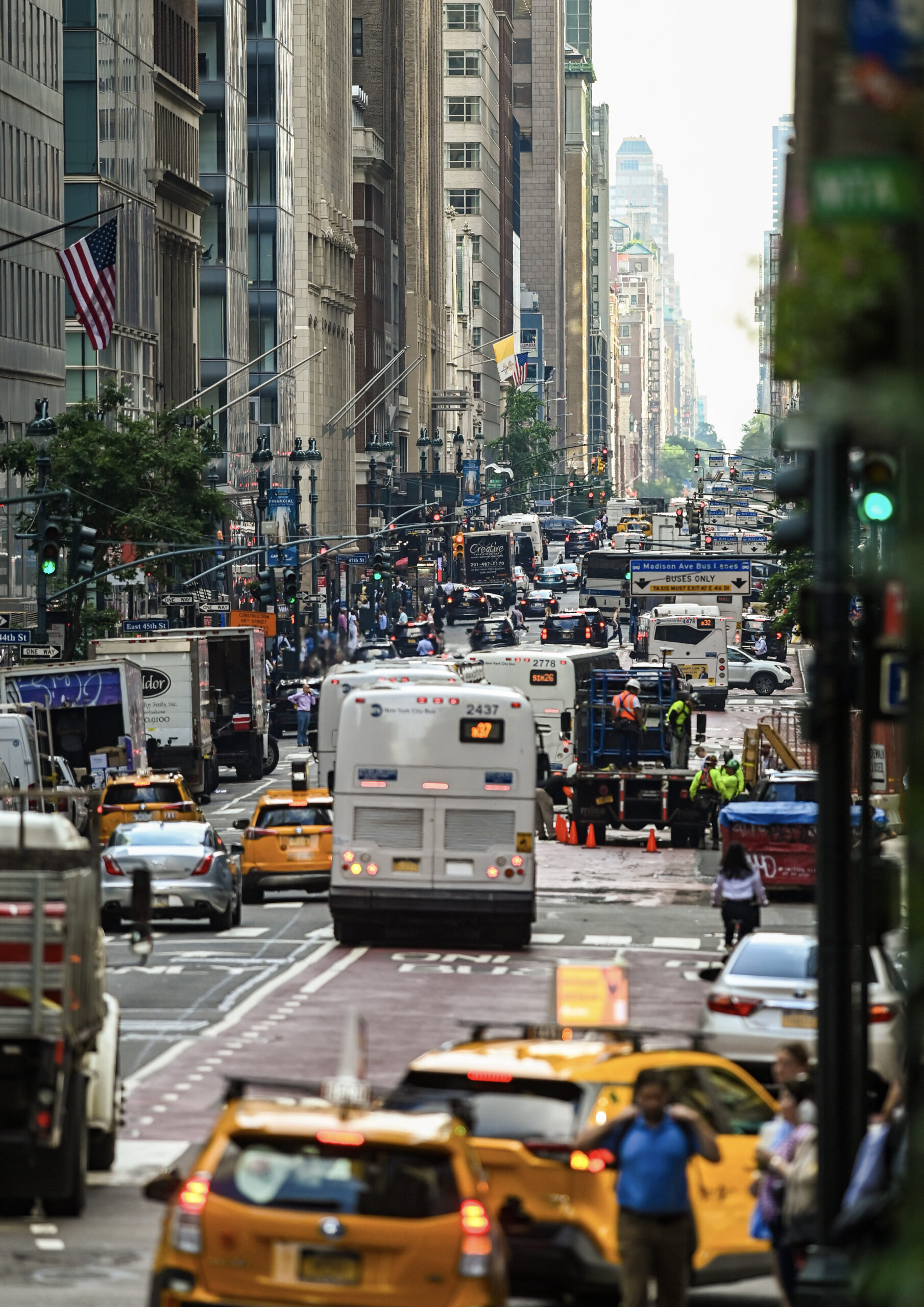Congestion pricing: Bold experiment or a money grab?
By Sal Rodriguez | February 6, 2025
Is New York City’s congestion pricing plan a bold experiment or just a money grab?
After many years of debate, many thousands of pages of reports and no shortage of lawsuits, New York City on January 5 began its much anticipated congestion pricing program for drivers entering central Manhattan. It’s an idea that’s being closely monitored across the country and is likely to spread to Western cities.
As described by the Associated Press, “Drivers of most passenger cars will pay $9 to enter Manhattan south of Central Park on weekdays between 5 a.m. and 9 p.m. and on weekends between 9 a.m. and 9 p.m. During off hours, the toll will be $2.25 for most vehicles.”
The basic aim of congestion pricing in this context is two-fold: To reduce traffic congestion in an area infamous for its congestion and, of course, to raise revenue.
According to Reuters, “Before the fee went into effect, New York said more than 700,000 vehicles entered the Manhattan central business district daily, slowing traffic to around 7 miles per hour on average, which is 23% slower than in 2010.”
Early data indicates the pricing has contributed to a 7.5% reduction in traffic. The plan is expected to raise $500 million in its first year. The revenue will be used to help finance improvements to subway, bus and commuter rail services. The program has prompted an unorthodox sorting of critics and supporters.
Critics on the right have condemned the pricing as a money grab which panders to environmentalists and transit authorities. Likewise, the city’s teachers’ union has sued the city and has argued, “No one disputes that New York needs to invest in public transit. But doing it on the backs of the working people of New York City is wrong, and tone deaf.”
And indeed, there’s no shortage of ammunition for critics of exactly how New York City is doing things.
Using the revenue from congestion pricing to pour money into the city’s transit system is much like setting money on fire. The Metropolitan Transportation Authority, for example, reported losing around $600 million from fare evasion in 2022 alone. New York transit authorities also spend about six times what their counterparts in Berlin and Paris do on similar projects. And while London spends about $9.30 to move one subway car one mile, New York spends over $15 to do the same. The waste is legendary. Perhaps more people would be using transit if MTA did a better job of running their operations and ensuring it was safe to use and reliable. Perhaps if they were better stewards of their funds over the years they would have expanded services that would encourage even greater use. One could end the discussion there, along with many other critiques of New York mismanagement.


But, still, there’s a legitimate question: Is congestion pricing a good idea or not? After all, while one purpose of congestion pricing is to raise revenue, the primary justification, in theory, is improved traffic management. On this front, things are more favorable for what New York City is doing.
While New York City is the first of its kind in the United States to try congestion pricing on this scale, cities around the world have turned to it in central city areas, including Singapore and London. Singapore has been using congestion pricing since the 1970s.
In a favorable if critical assessment of Singapore’s use of congestion pricing by then-University of Colorado law professor Stephen Williams for the Cato Institute’s Regulation publication in 1981, Williams lays out the rationale for congestion pricing in easy-to-understand terms:
Just as the failure of society to price air and water causes these resources to be overused (polluted) and imposes costs on others, so the lack of congestion pricing leads to overuse of highways at rush hours. By making travelers bear these costs, congestion pricing persuades some of them to switch to carpooling, public transportation and travel at less congested hours. Without prices, many a traveler is now making solo journeys whose value is not worth the total costs imposed-that is, the “private” costs of his time and vehicle operating expenses, plus the “social” costs of others’ time.
In the decades since, Singapore has continued to use congestion pricing with modifications from the time of Williams’ assessment, with pricing now automated with electronic tolling. Urbanist Alain Bertaud has described Singapore’s efforts as a success, explaining, “Singapore road pricing has achieved its goal of maintaining a minimum speed within specific roads over more than 30 years.”
In the case of London, Mayor Ken Livingston, a left-winger who championed the congestion-pricing plan which continues today, said, “I nicked the idea off Milton Friedman.” Friedman co-wrote a paper in the early 1950s making an argument for highway tolling. “In fairness, the people who drive on a road should be charged for the service received, and in proportion to their use of the service,” he argued.
Two decades later, London authorities continue to credit the introduction of congestion pricing for sustained reductions in congestion and greater use of alternative modes of transportation compared to the use of cars. In other words, congestion pricing can do what proponents say it can do and withstand the test of time.
Generally, no one likes the idea of having to pay to do things they once could do without paying extra. Considerations of whether congestion pricing is justified has to overcome that first hurdle. If people are persuaded that congestion is in fact a hidden cost on them and those stuck in traffic around them, congestion pricing will probably begin to make more sense. Incentives do matter, after all.
There are still, though, debates to have over how much to price, how to price and what to do with the revenue. A lot of those debates are sure to be shaped by just how bad congestion is, what alternatives there are to congestion pricing, whether existing transportation infrastructure is otherwise optimized, trust in leaders to develop pricing schemes driven by congestion management considerations primarily rather than revenue-generation, and so on.
While open to being proven wrong, I suspect New York City is a case where a reasonable-in-theory idea is being implemented by incompetent authorities. It seems possible that the city’s plan, if it holds, could basically work to reduce vehicle congestion while also squandering opportunities to make it work even better.
Sal Rodriguez is opinion editor for the Southern California News Group and a senior fellow with the Pacific Research Institute. He is the author of Dynamism or Decay? Getting City Hall Out of the Way, published by the Pacific Research Institute.
Photos © Alexa Zabache; MTA
